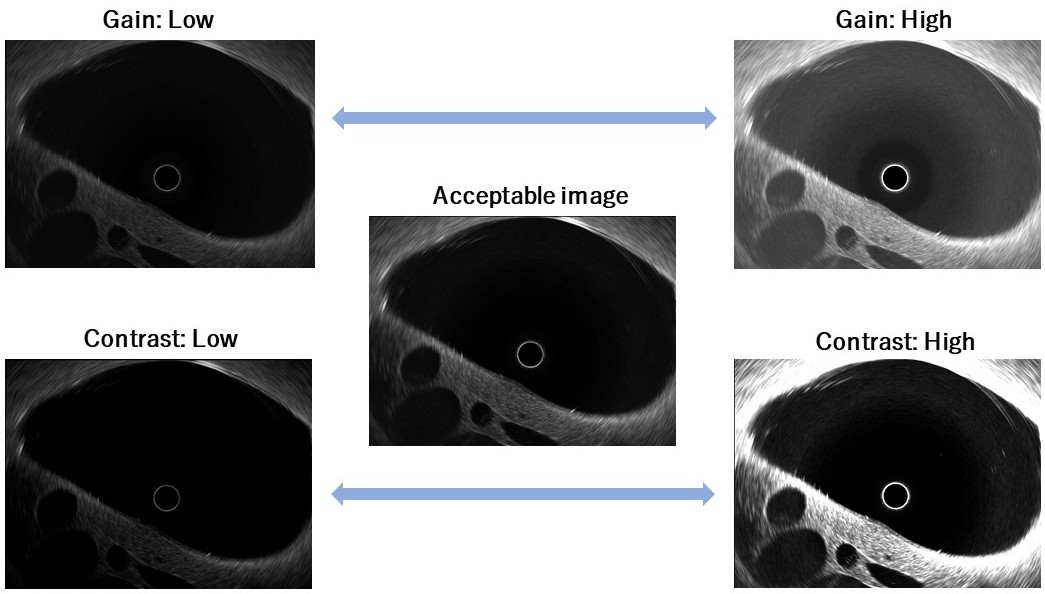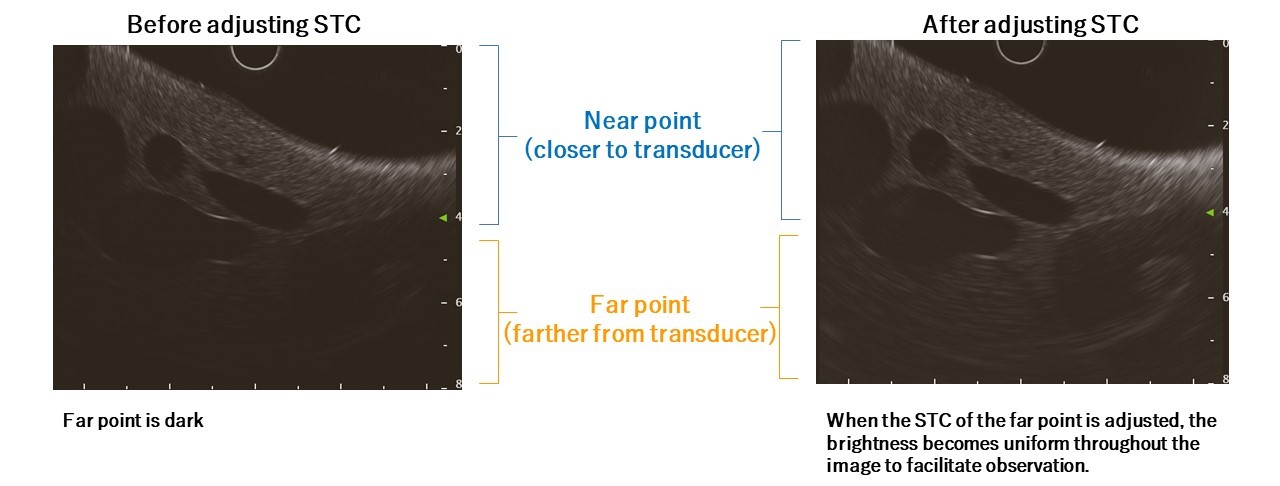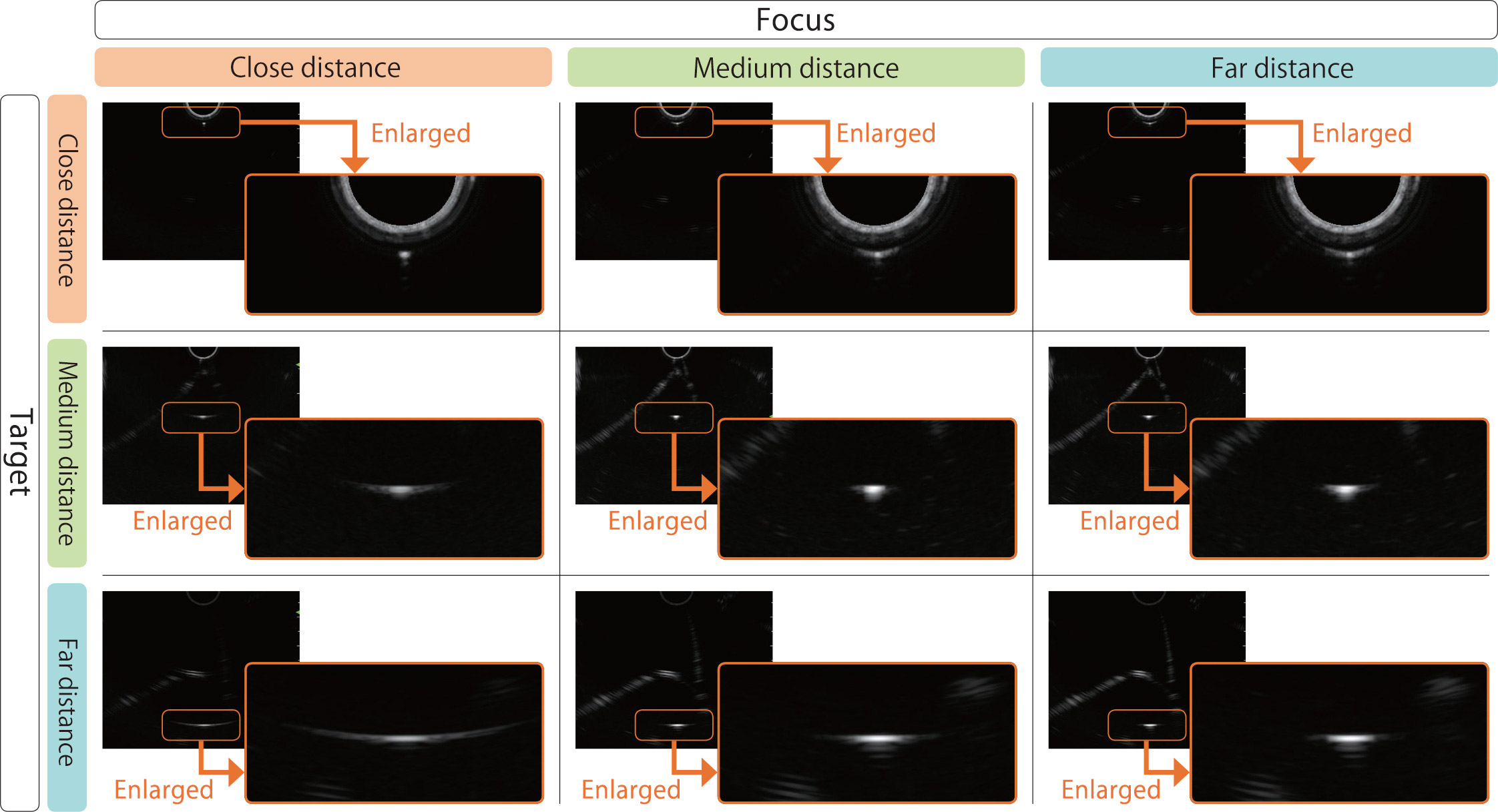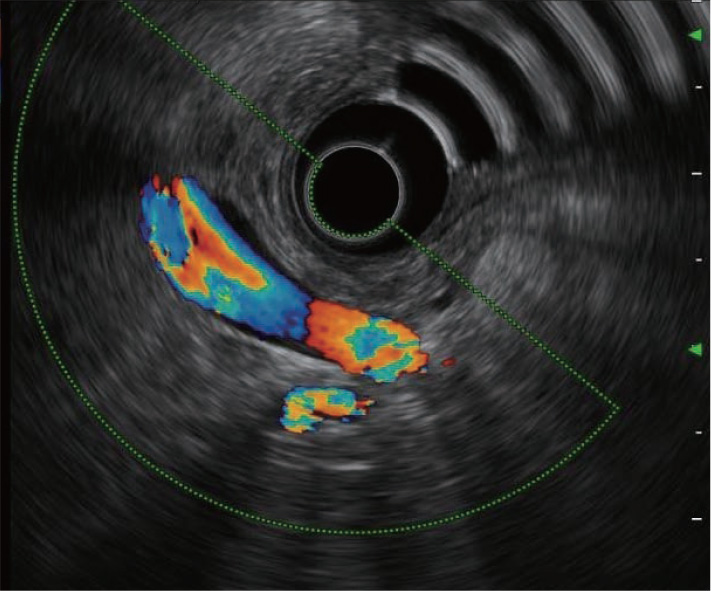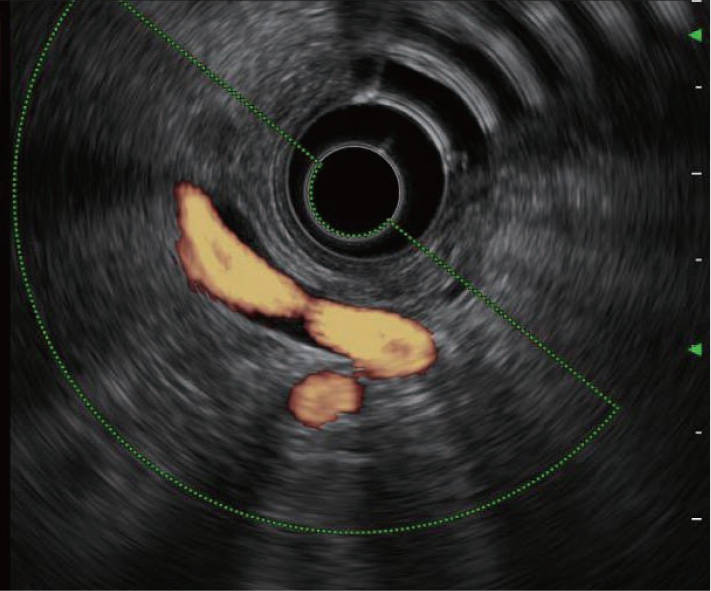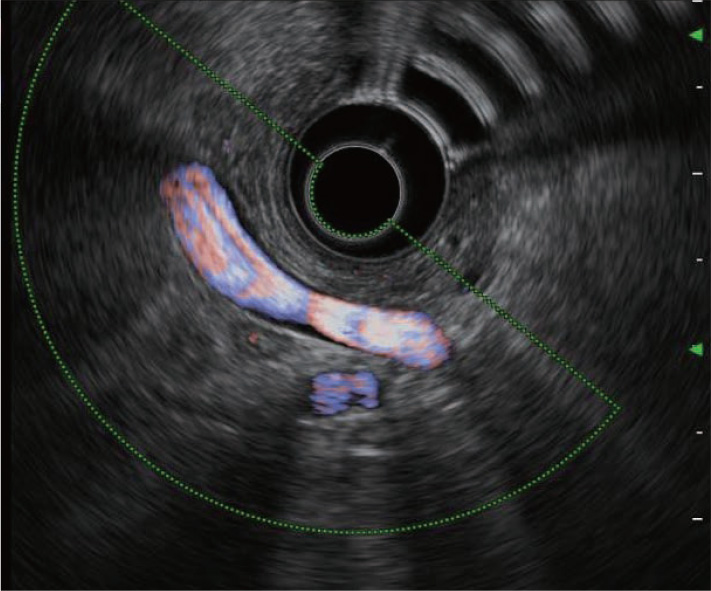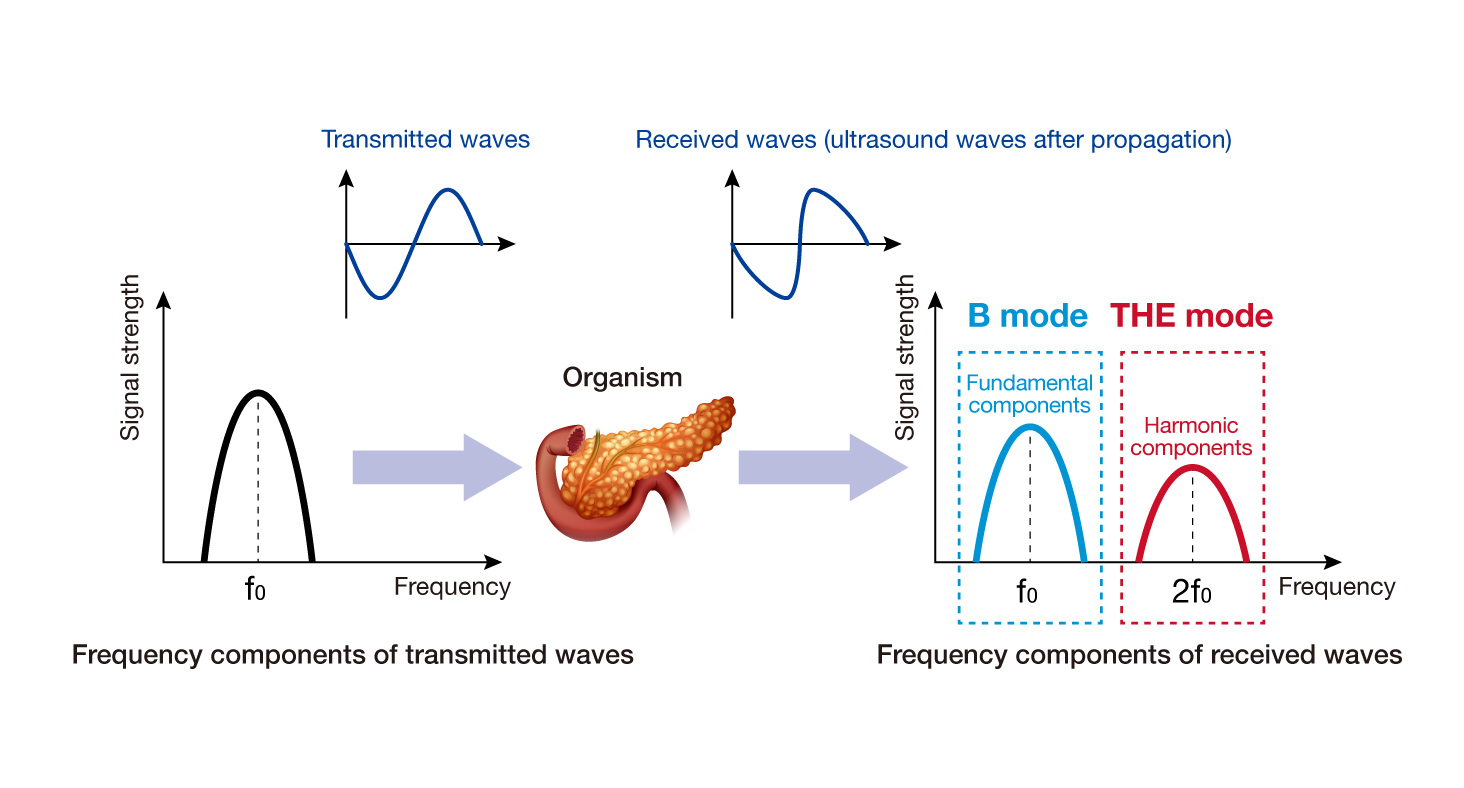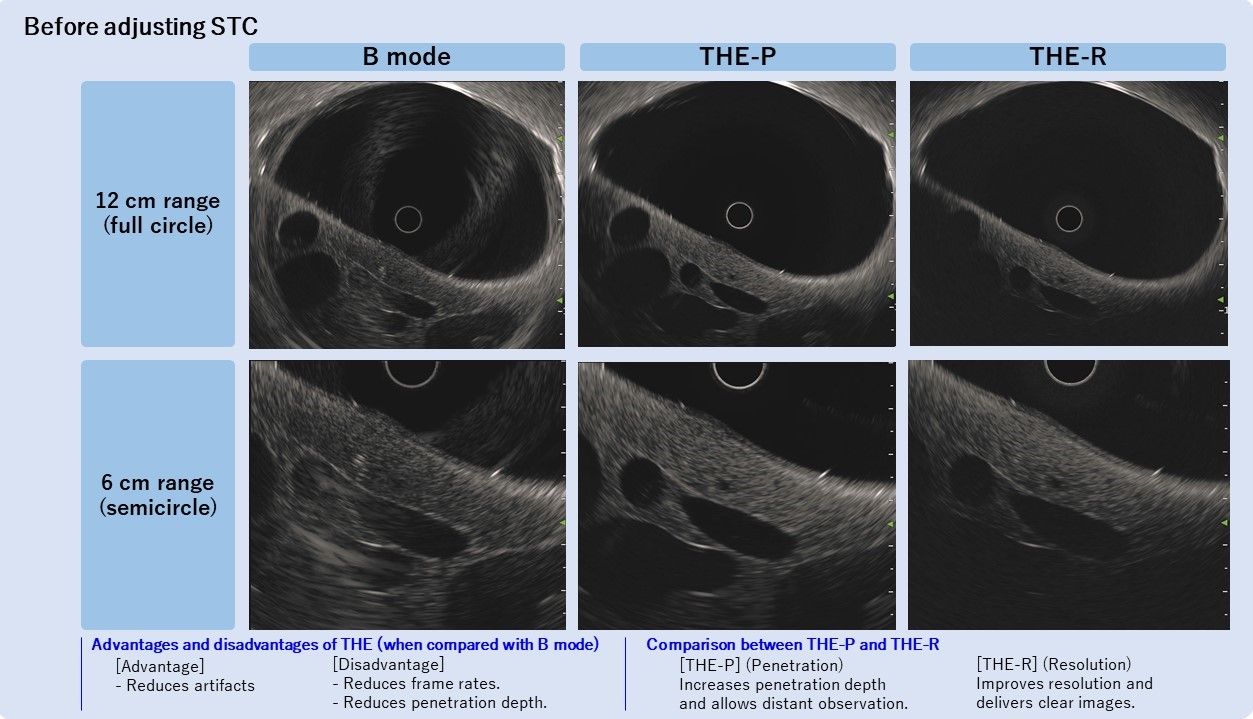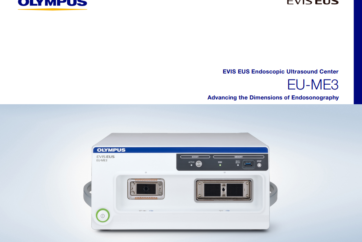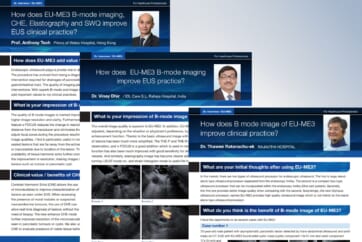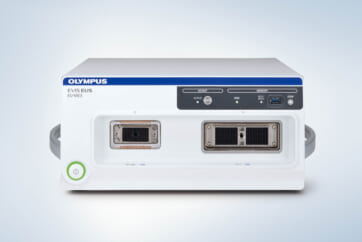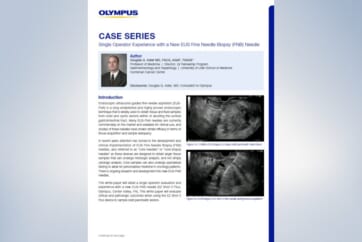Functions
Adjusting the gain and contrast
To display clearer, sharper ultrasound images, the image quality parameters (gain and contrast) of the ultrasound processor need to be properly adjusted.
Gain: Adjusts the brightness of displayed images.
Contrast: Adjusts the difference between the bright and dark parts of displayed images.
Adjusting the sensitivity time control (STC)
Ultrasound waves attenuate according to distance. To compensate for this, adjust the intensity of the ultrasound image at each depth (distance from the transducer). Adjust it so that the image brightness is uniform throughout.
Setting the focus
Focusing on the target (region of interest) improves resolution in the parts of the image that surround the focused area.
Doppler function
The Doppler function detects ultrasound signals from blood flows and converts them into images.
Image enhancement function — tissue harmonic echo (THE)
When ultrasound waves are transmitted into region of interest, the ultrasound signals get distorted, generating harmonics*. THE is a technology that achieves visualization by utilizing the harmonic components. It can reduce artifacts that obstruct observation of images.
* Components of frequencies that are integral multiple of those frequencies.
- Content Type

